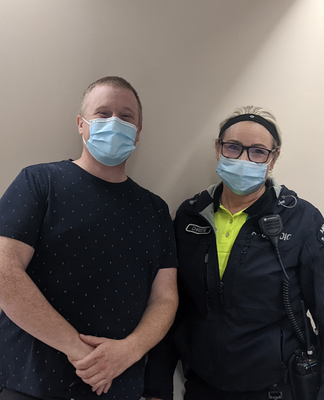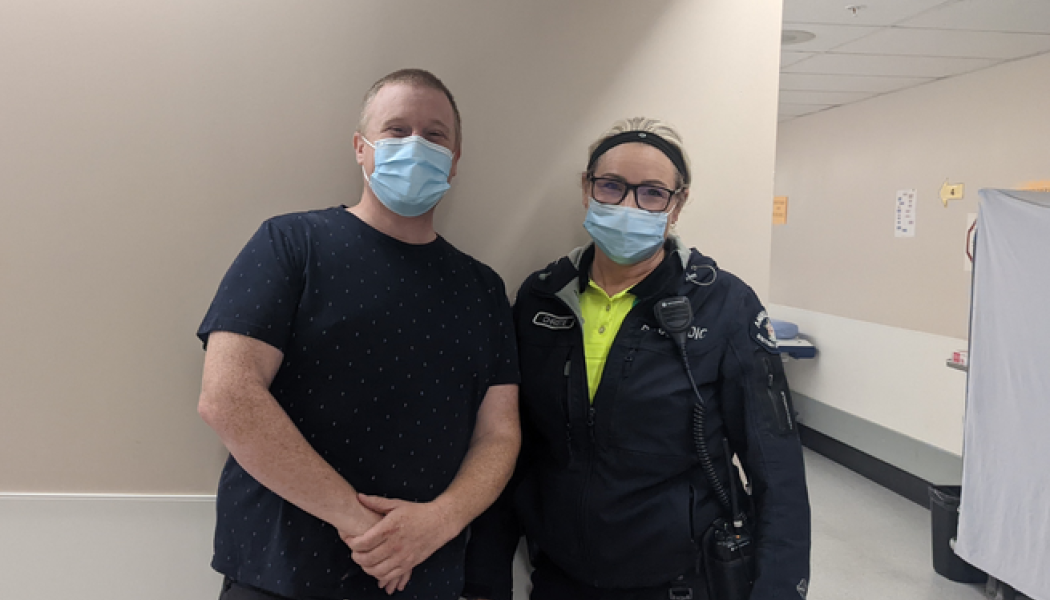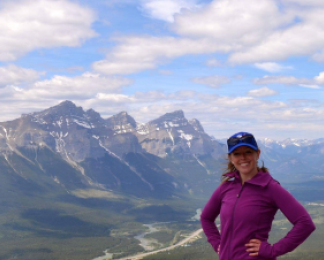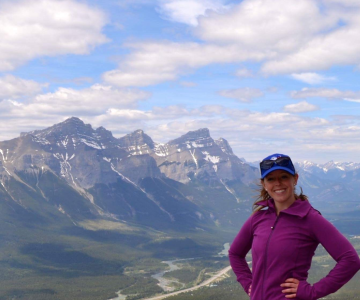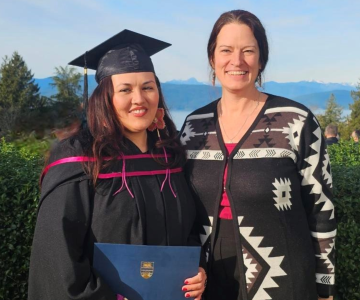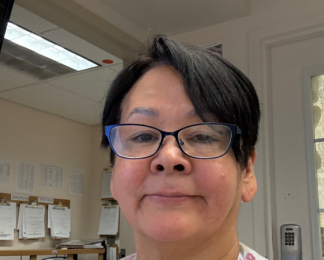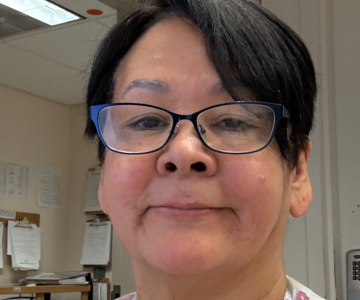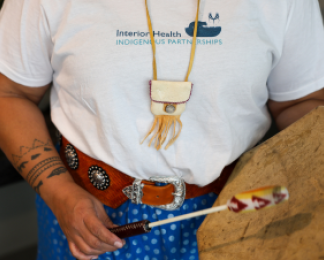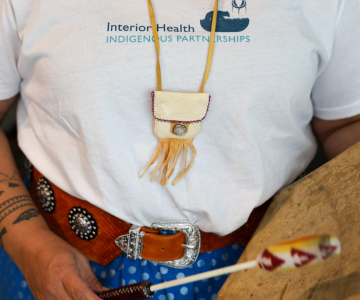Kamloops social worker Rikki Barden with paramedic Christi Arnason
As the toxic drug crisis rages on, Interior Health’s mental health and substance use (MHSU) teams and B.C.’s paramedics are working together to connect people at risk to important health-care services.
On June 1, 2022, BC Emergency Health Services (BCEHS) introduced the new Assess, See, Treat and Refer (ASTaR) Pathway to serve people who use drugs throughout the province. With consent, paramedics connect people who have experienced a drug poisoning event but do not wish to go to hospital with outreach services within their geographical region.
“These outreach services include but are not limited to treatment, safe supplies, housing, peer support, and more. This pathway is one of many strategies BCEHS is putting in place for paramedics to reduce harm in their communities,” says Jennifer Bolster, a paramedic practice leader for BCEHS.
Those who agree are contacted at a later date by Interior Health MHSU, and offered appropriate services based on their personal situation and preferences.
The project opens up the communication between first responders and MHSU services, and provides new opportunities to provide people with supports they need.
“Not everyone who experiences a drug poisoning event wants to or even needs to come to the hospital,” says Amanda Lavigne, an IH clinical nurse specialist. “There are many reasons why someone may decline transport to hospital after an overdose – fear of someone they love finding out, the feeling of shame and being stigmatized in our health-care settings. But we then need to provide them with options for follow up and care in their community.
“You don’t need to be an MHSU client to accept support after toxic drug poisoning. It’s about offering people what they may need in their community after a traumatic event.”
Rikki Barden is a social worker at Royal Inland Hospital. He says the opportunity for people to be connected to supports through the new process can be life changing.
“You’ve got someone coming from a non-judgmental place to offer support to folks who may have never been attached to services, who have never reached out, and who may be hiding their addiction. Unlike someone who comes into the emergency department and then just wants to get out as quickly as possible, we can contact them after the fact on their own terms, and many people are really thankful for the opportunity to tell their story and be offered support.”
There is an emphasis on protecting people’s privacy and being person-centred.
“It’s so important that people get an opportunity to get connect to service, especially in the midst of this terrible toxic drug crisis,” Rikki says.
Learn more about Interior Health’s response to the toxic drug crisis

